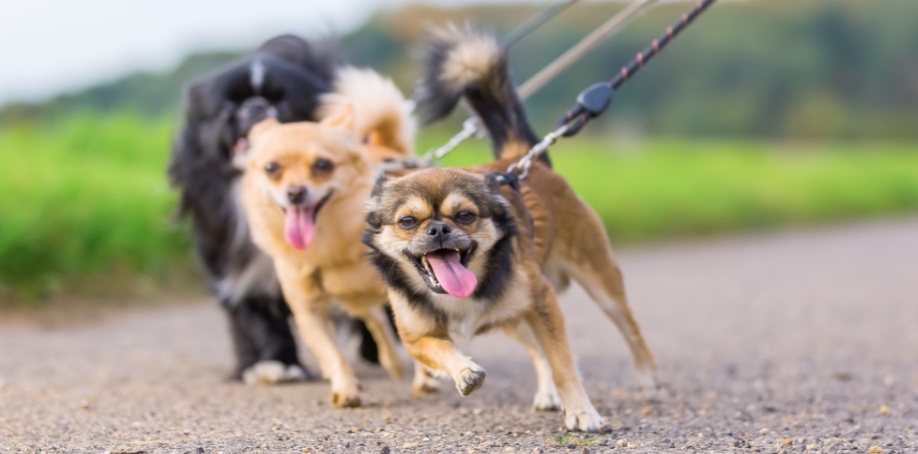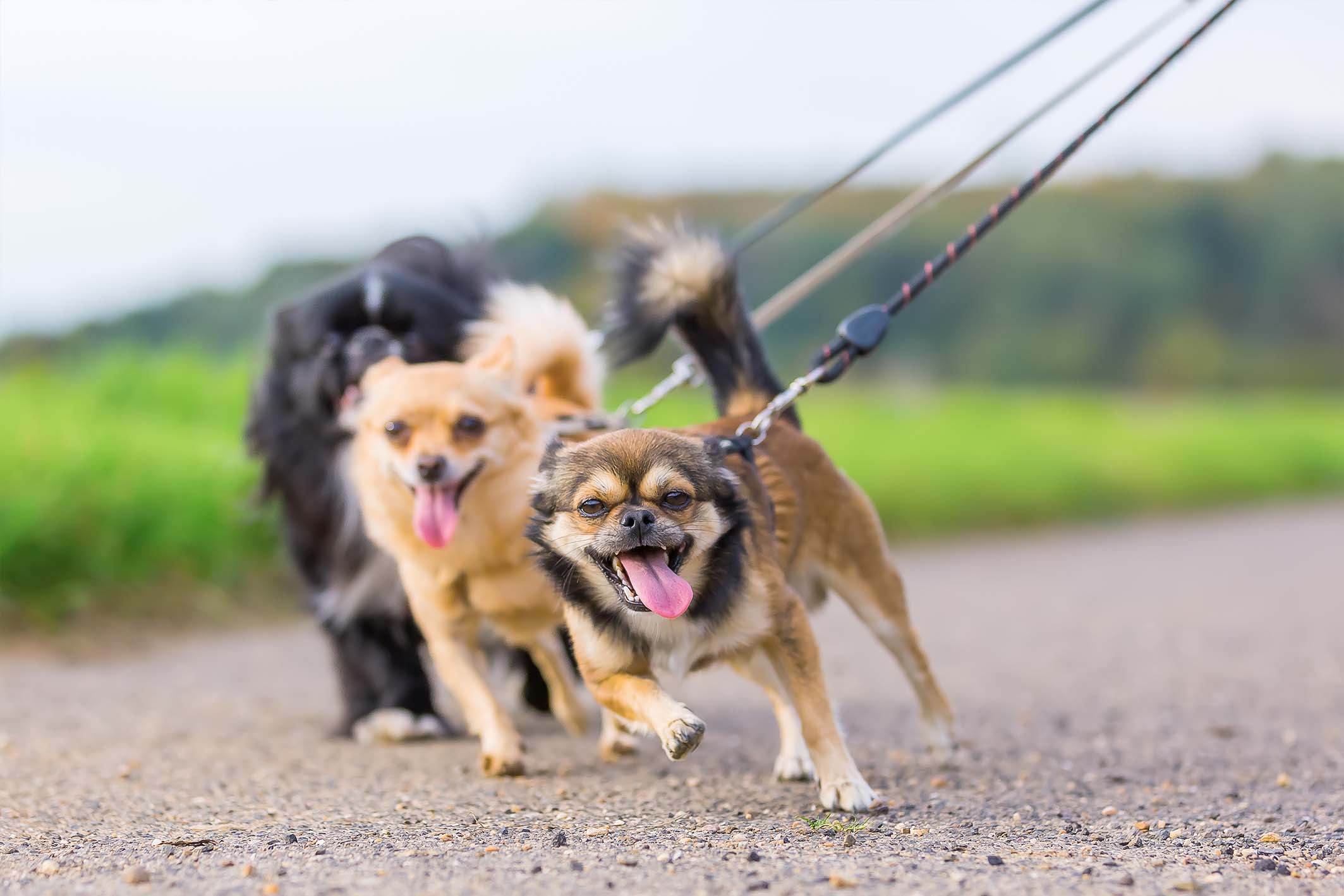
Going for a walk is a great way to strengthen the bond between you and your dog. However, one of the most frustrating aspects of walking is when the walk turns into a chase. Especially when you first start to go for walks, dogs may take the lead simply because they walk faster than you. Their pace may unfortunately complement their strength as they pull your arm away from your shoulder.
The First Few Walks
When you first begin loose leash walking, you need to make sure that every walk is a training session. You want your dog to learn proper walking etiquette (which is not innate for them) and so you should be prepared for consistent reinforcement and correction. Be advised that your dog can get really frustrated because walks with their owner are not instinctual – they naturally want to explore all the new sights and smells in the area – so keep all walks short in the beginning
Initially walk at a fast pace to prevent your dog from pulling because you are walking slowly. Stay calm and patient during these walks. Depending on your dog, it may take them a long time to understand what you want them to do. Be positive and upbeat – the right mindset helps project to your dog that walks are fun and that you are enjoying yourself. Praise and reward them often.
Interacting with Your Dog During Walks
Walks should never be a silent endeavor. Try to interact with your dog when you walk them. If your dog is focused on you, they are less likely to try to pull you as they walk away. Tell your dog that they are a good boy, pet him, and show physical affection. Do not be afraid to occasionally change the pace of the walk to keep your dog anticipating your next move. If you really want to burn some of your dog’s energy when walking, trying practicing commands to further generalize them. Every ten to twenty steps is a new location in your dog’s eyes. Tell your dog to sit, down, stay, come, or any other trick he knows. Your dog’s reward is that the walk continues.
Responding to commands gives your dog something to do during the walk so they are less likely to pull. You will find that your dog will stay closer to your side if they think that they will have to perform some trick in the upcoming seconds. Additionally, doing commands burns more energy than just walking so walks can be shortened. This saves time but generates the same result as longer, more mundane adventures.
Should I Allow My Dog to Walk in Front of Me?
Generally speaking, yes. A myth exists that dogs walk in front to assert dominance. Dogs walk in front because they are either faster or simply more excited. If you have ever walked next to someone late for a meeting, you know that they pass you not because they are more dominant, but they are more excited (or stressed…) about getting to their next location.
The ‘generally speaking’ qualifier is that dogs should walk in front if they are not pulling or exerting pressure on the leash. It is important to remember that dogs are very curious and excited animals but pulling is a behavior that owners should try to correct before it turns into a habit.
How to Stop My Dog from Pulling
Stop the walk. Do not go forward if the leash is tight. You can go backward, turn around, or stand still. Dogs learn by association. If you can teach your dog to understand that the walk stops when they walk too far ahead of you, then they will stop pulling. If your dog is taking too long to come back to you, simply walk another way.
Once your dog is back by your side, praise him and start walking again. Your dog should remember that praise is a reward of coming back to you. Take your time and practice patience. Especially in the beginning, keep your walks short and account for the inevitable stoppage time that your dog will incur if they start to pull ahead from you.
Other Tricks and Tips
Make sure your dog knows the wait command. You can curb some of your dog’s energy and prevent pulling just by having your dog wait before exiting your car or house.
Switch to a front-connection harness. Leashes pull against your dog’s collar and can be uncomfortable for them.
Exercise and play with your dog before going for a walk. If your dog’s energy is low because they are fatigued from playing, they will be less likely to pull during a walk.
- Be consistent. Again, dogs learn by association. Immediately stop walking when your dog starts to pull. If you do not allow your dog to move forward while there is tension on their leash, your dog will quickly learn to stay close to you and not to pull.
Conclusion
A dog will stop pulling if they learn that their walk stops if they walk too far ahead of you. Dogs pull because they are excited and curious, but developing an impulse control allows for a more enjoyable experience for you and your pup! Keep walks fun and continually interact with your dog just like you would a best friend. Finally, when you first start going on walks, choose routes with few distractions – it is much harder to have your dog focus on you when squirrels and deer are repeatedly jumping out of the trees! Good luck!





